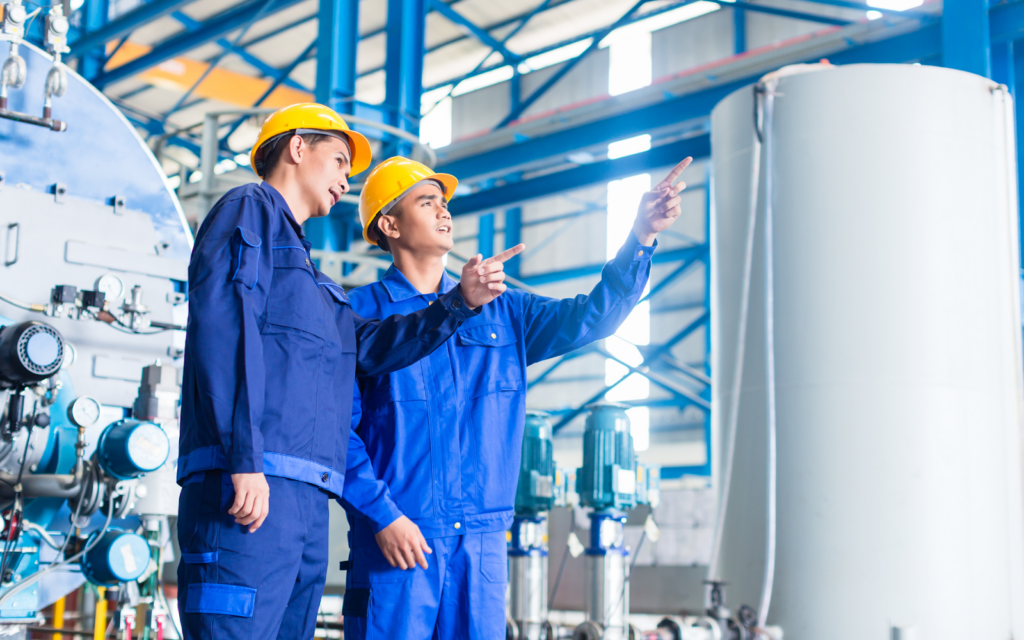Posts by Ben Unruh
Ways New Tariffs on China, Canada, and Mexico Are Reshaping Global Trade
In March 2025, the US implemented sweeping tariffs on imports from China, Canada, and Mexico, escalating trade tensions and reshaping global supply chains. The US imposed a cumulative 45% tariff on Chinese goods (25% from Section 301 tariffs, plus 10% in February 2025, and another 10% in March 2025). Additionally, 25% tariffs on Canadian and Mexican imports have come into effect, targeting key sectors like steel, aluminum, and agricultural products. These measures have triggered immediate retaliatory actions, with Canada announcing 25% tariffs on $155 billion worth of US goods and China targeting US agricultural products with 10%-15% tariffs. This article explores the impact of these newly imposed tariffs, the global response, and how Align Manufacturing, your partner in precision engineering and sourcing excellence, can help businesses diversify their supply chains to mitigate rising costs and geopolitical risks.
The New Tariffs: What’s Changed in March 2025?
The US has cumulatively increased tariffs on Chinese goods to 45%, combining the existing 25% Section 301 tariffs with an additional 10% in February 2025 and another 10% in March 2025. This applies to a wide range of goods, including electronics, machinery, and consumer products. For Canada and Mexico, the US has imposed 25% tariffs on key exports, though steel and aluminum products are subject to Section 232 tariffs, which apply to all countries and target specific steel mill products like I-beams, rebar, and extrusions.
Key Changes:
- China Tariffs: Cumulative 45% tariff now applies (25% Section 301 + 10% February + 10% March).
- Canada and Mexico Tariffs: 25% tariffs on a broad range of goods, with steel and aluminum subject to Section 232 tariffs.
- Retaliatory Measures: Canada and China have announced immediate counter-tariffs, while Mexico is expected to unveil its response soon.
Immediate Impact on Global Trade
The new tariffs have already disrupted global trade, with countries like Canada and China retaliating swiftly. Canada imposed 25% tariffs on $155 billion worth of US goods, targeting agricultural products and energy exports, but retaliatory hikes in Tariffs are simply being matched by the US seeing tariffs increase further. China, meanwhile, has slapped 10%-15% tariffs on US agricultural goods, including soybeans, pork, and dairy.
Key Impacts:
- Higher Costs for Consumers: Tariffs are expected to increase prices for essential goods like food, fuel, and electronics.
- Supply Chain Disruptions: Companies relying on cross-border trade between the US, Canada, and Mexico face higher costs and logistical challenges.
- Economic Uncertainty: The tariffs have created volatility in global markets, with Asian stock indices like Japan’s Nikkei 225 dropping sharply.
Long-Term Adjustments in Global Supply Chains
The tariffs are forcing businesses to rethink their supply chain strategies. Many companies are exploring alternative manufacturing hubs in Southeast Asia, such as Thailand, Vietnam, and India, to avoid rising costs and geopolitical risks.
Why Diversify?
- Cost Efficiency: Moving production to countries with lower tariffs and labor costs can offset the impact of US trade policies.
- Risk Mitigation: Diversifying supply chains reduces dependency on a single region, making businesses more resilient to geopolitical risks.
- Access to New Markets: Manufacturing in Southeast Asia provides easier access to emerging markets in the region.
Key Import Categories Affected by New Tariffs
As businesses adapt to the new tariff landscape, understanding which import categories are most affected is crucial for strategic supply chain planning. Recent data from the US Census Bureau reveals the countries most impacted across major product categories:
Mexico faces the highest exposure in:
- Delivery trucks (78% of US imports)
- Insulated wire (53%)
- Computers (34%)
China dominates US imports of:
- Electric batteries (56%)
- Telephones (45%)
Canada is the primary source for:
- Crude petroleum (58%)
- Refined petroleum (22%)
These figures highlight why many US manufacturers are urgently reevaluating their supply chains. For instance, automotive and electronics manufacturers face significant cost increases with Mexico and China tariffs affecting crucial components. Meanwhile, energy-intensive industries must navigate higher costs due to Canadian petroleum tariffs.
The diversification trend is accelerating as businesses seek to reduce dependency on these heavily taxed import channels. Companies importing delivery trucks from Mexico, for example, are now exploring alternatives in Southeast Asia and India where tariff exposure is minimal. Similarly, electronics manufacturers dependent on Chinese batteries and telecommunications equipment are establishing new supplier relationships in Vietnam and Thailand.
This strategic pivot isn’t merely about avoiding tariffs—it’s about creating resilient supply chains that can withstand future trade policy shifts. Forward-thinking businesses are treating this disruption as an opportunity to build more agile, diversified supplier networks that reduce concentration risk while potentially opening doors to new markets.
4. The Role of Align Manufacturing in Supply Chain Diversification
Align Manufacturing specializes in helping companies transition their manufacturing operations from China, Canada, and Mexico to alternative locations like Thailand, Vietnam, and India. By leveraging local expertise, infrastructure, and trade agreements, AlignMFG ensures a seamless transition that minimizes supply chain disruption and maximizes cost savings.
Services Offered:
- Site Selection: Identifying the best locations for manufacturing based on industry-specific needs.
- Logistics Optimization: Streamlining supply chain operations to reduce costs and improve efficiency.
- Regulatory Compliance: Navigating local laws and trade agreements to ensure smooth operations.
5. Case Study: Success Stories in Supply Chain Diversification
Several companies have successfully diversified their supply chains with Align Manufacturing’s assistance. For example, a US-based electronics manufacturer relocated its production to Vietnam, reducing costs by 25% and avoiding tariffs on Chinese imports. Another client, a furniture retailer, moved operations to India, benefiting from lower labor costs and access to a growing domestic market.
The Future of Global Trade
As tariffs continue to reshape global trade, businesses must adapt to remain competitive. Diversifying supply chains is no longer optional but a strategic necessity. By partnering with Align Manufacturing, companies can navigate this transition effectively, ensuring long-term growth and resilience.
Summary
The newly imposed tariffs in March 2025 are creating significant challenges for businesses worldwide. However, these challenges also present opportunities for companies willing to adapt. By diversifying supply chains to regions like Thailand, Vietnam, and India, businesses can mitigate the impact of tariffs and maintain cost efficiency. AlignMFG is your trusted partner in this journey, offering the expertise and support needed to make this transition seamless and successful.
Ready to Diversify Your Supply Chain? Contact Align Manufacturing today to explore how we can help your business thrive in a changing global landscape.
NOTE: With retaliatory tariffs being a regular occurance be sure to contact us about your manufacturing projects for up to date info on tariffs and expert guidance on reducing your supply chain risk.
FAQs
How long does it take to relocate manufacturing operations?
The timeline varies depending on the complexity of the operation, but Align Manufacturing typically completes transitions within 6-12 months.
What industries benefit most from diversification?
Industries like electronics, textiles, furniture, and automotive are particularly well-suited for diversification due to their reliance on cost-effective manufacturing.
How does AlignMFG ensure a smooth transition?
Align MFG provides end-to-end support, from site selection and logistics to regulatory compliance and workforce training.
Risk Management and Tariffs: Diversifying Manufacturing from China to Vietnam, India, and Thailand

The COVID-19 pandemic has underscored the fragility of global supply chains, revealing the pitfalls of overreliance on a single source. Production delays and shortages highlighted the need for a resilient supply chain, which is crucial for the survival and continuity of businesses in turbulent times.
In response, companies are increasingly turning to diversification as a strategic risk management tool. Diversifying manufacturing beyond China to include emerging hubs like Vietnam, India, and Thailand has become essential. This strategy not only mitigates tariffs and cost impacts but also ensures market access, reduces lead times, and builds a robust supply ecosystem capable of withstanding future disruptions.
Economic and Political Risks in Global Manufacturing

Navigating the economic and political landscapes is vital for managing global manufacturing risks. Understanding tariffs and the political climate’s impact on production and investment is fundamental.
Tariffs and Trade Tensions Between the US and China

Ongoing tariffs and trade tensions have led businesses to reassess their strategies. Increased costs due to tariffs on Chinese goods drive companies to explore alternative manufacturing locations. For instance, the US imposed tariffs on approximately $550 billion worth of Chinese goods, prompting a significant shift in supply chain strategies.
Country-Specific Risks
Economic stability, fluctuating currencies, bureaucracy, and the ease of doing business vary by country. These factors impact the efficiency and cost-effectiveness of manufacturing in Vietnam, India, and Thailand. Vietnam’s GDP grew by 2.9% in 2020 despite the pandemic, showcasing its economic resilience.
Political Climate
Political stability and government policies significantly influence the attractiveness of a country for foreign direct investment (FDI). A supportive political environment offers incentives, infrastructure, and predictability, making it an appealing choice for manufacturers. Thailand’s political stability and pro-business policies have attracted substantial FDI, with inflows reaching $14.6 billion in 2021.
Tariffs and Trade Barriers: Navigating Challenges
Tariffs and trade barriers shape the global manufacturing landscape, influencing decisions on production locations. The US-China trade war has led to increased tariffs, prompting companies to rethink their supply chain models.
| Strategies for Mitigating Tariff Risks: |
| Supply Chain Diversification: Spread production across multiple countries to minimize dependency and tariff exposure. |
| Nearshoring: Move manufacturing closer to end markets to reduce transit times, costs, and tariff impacts. |
| Vertical Integration: Control more stages of the supply chain to decrease reliance on imported materials. |
| Regional Trade Agreements: Agreements like the Comprehensive and Progressive Agreement for Trans-Pacific Partnership (CPTPP) and the Regional Comprehensive Economic Partnership (RCEP) reduce tariffs and ease trade, offering new opportunities for manufacturers. For example, RCEP covers 30% of the global GDP, enhancing trade prospects in the region. |
Diversifying Manufacturing from China

Companies are increasingly moving manufacturing from China to Vietnam, India, and Thailand, which offer lower labor costs, abundant resources, and growing economies.
Vietnam
Known for its skilled workforce and favorable trade agreements, Vietnam is a popular choice for relocating production. The country’s electronics exports were valued at $96 billion in 2020, reflecting its manufacturing prowess.
India
With a large consumer market and investment-friendly policies, India presents numerous opportunities for diversification. India’s pharmaceutical exports grew by 18% in 2020, showcasing its competitive advantage in this sector.
Thailand
Thailand offers a stable political environment, good infrastructure, and a skilled labor force, making it ideal for expanding beyond China. The country’s automotive industry produced 2 million vehicles in 2019, highlighting its manufacturing capacity.
Advantages of Manufacturing in Vietnam, India, and Thailand

Labor Costs and Skills
Vietnam, India, and Thailand offer competitive labor costs and skilled workforces. Vietnam excels in textiles and garments, India in pharmaceuticals and technology, and Thailand in automotive and electronics manufacturing. For instance, Vietnam’s average monthly wage in manufacturing is around $250, significantly lower than China’s $650.
Infrastructure and Logistics
These countries are investing in infrastructure to meet manufacturing demands. Vietnam has improved port and transportation facilities, India’s logistics sector is growing, and Thailand’s Eastern Economic Corridor is enhancing its infrastructure.
Industry-Specific Opportunities
Each country excels in specific industries, drawing substantial foreign investment. Vietnam is a leader in electronics, India in automotive, and Thailand in both automotive and electronics.
For Align MFG’s metal parts and engineering solutions, Vietnam offers competitive labor costs, India boasts a scalable workforce, and Thailand provides a balance of cost-effective and skilled labor.
Evaluating Benefits
Diversifying manufacturing locations provides numerous advantages, including better market access, enhanced supply chain resilience, and attractive investment incentives. These factors contribute to increased business stability and profitability for Align MFG’s metal parts and engineering solution.
Infrastructure and Logistics in Vietnam, India, and Thailand
Assessing infrastructure and logistics is key to successful manufacturing diversification.
Transportation Networks
Vietnam has major ports and is investing in road and rail upgrades. India has extensive railways but rural connectivity issues, while Thailand has superior ports and road networks.
Logistics Efficiency
Cities like Ho Chi Minh City, Mumbai, and Bangkok are logistical powerhouses. Vietnam and Thailand score well in logistics proficiency, while India is improving through initiatives like ‘Sagarmala’.
Government Investment
Governments in these countries are heavily investing in infrastructure to support manufacturing. Vietnam is focusing on highways and airports, India on urban and industrial ecosystems, and Thailand on sustainable infrastructure.
Embracing a Multi-Faceted Future in Manufacturing
The need to diversify manufacturing bases is critical for building resilience.
At Align MFG, we specialize in helping businesses diversify their manufacturing operations from China to strategic locations like India, Vietnam, and Thailand. We are also diversifying ourselves, establishing production facilities in these countries to manufacture high-quality metal parts. Our unique selling points include our extensive industry knowledge, strong local partnerships, and a steadfast commitment to quality and innovation. By leveraging local resources and optimizing supply chains, we ensure cost-effective and efficient production.
Contact Align MFG to discover how we can support your business in optimizing supply chain resilience and operational efficiency through our expert engineering of metal parts. Our comprehensive services cover various casting processes, parts, and industries, ensuring tailored solutions to meet your specific needs.
DIVERSIFY YOUR SUPPLY CHAIN
As global markets expand, supply chains must adapt to new challenges driven by competitive pressures, consumer demands for sustainability, and the unpredictable nature of international trade. Globalization has created intricate supply networks, making companies vulnerable to risks like geopolitical tensions and economic fluctuations. Diversification mitigates these risks by spreading dependencies across multiple suppliers and regions, ensuring consistent operations. Ethical and sustainable sourcing further strengthens supply chains, meeting consumer expectations for transparency and social responsibility. Though diversifying may introduce short-term costs, the long-term benefits include significant savings, better negotiating leverage, and enhanced resilience against disruptions. By balancing efficiency with risk mitigation, companies can achieve a robust and adaptable supply structure that ensures long-term success.
Advantages of Supply Chain Diversification
- Mitigating Risk: Relying on a single supplier, particularly one located in a different country, exposes companies to a range of risks such as geopolitical tensions, trade disputes, natural disasters, and pandemics. Diversifying the supply chain reduces these risks by spreading them across multiple suppliers in different locations.
- Cost Savings: Competition between suppliers can help drive down costs and improve quality. By having multiple suppliers, companies can negotiate better pricing and terms.
- Improving Quality: Diversifying the supply chain can help companies to access new technologies and innovations, leading to improved quality and increased competitiveness.
- Increased Flexibility: Having multiple suppliers can provide companies with greater flexibility and responsiveness to changes in demand. This is particularly important in industries where demand can be volatile and subject to sudden changes.
Case Studies: Industries That Learned the Hard Way
- Automotive manufacturers faced a crisis when a single-source supplier in Japan was hit by an earthquake, causing a ripple effect that stalled production lines worldwide.
- The pharmaceutical industry, too, has been a victim of overreliance on specific markets, with drug shortages emerging as a consequence of quality control issues at foreign plants.
- Technology companies have struggled with intellectual property theft and counterfeit components due to insufficient vetting of new suppliers in diversified supply chains.
These real-world examples underscore the necessity of comprehensive risk assessment when exploring new sourcing options.
Strategies for Implementation
Building Relationships with Alternative Suppliers
One of the foundational steps in implementing supply chain geographic diversification is to build relationships honestly with potential alternative suppliers. This involves negotiating contracts, establishing communication channels, and setting up systems for tracking orders and deliveries. It is crucial to explain your business needs and approach to these suppliers, emphasizing the importance of regular or emergency support. This helps in maintaining the relationship and staying on their priority lists.
Managing Multiple Suppliers
Effectively managing a diversified supplier base requires robust systems. Implementing tools that are EDI (Electronic Data Interchange) capable can aid in tracking orders, monitoring performance, and ensuring reliability. An EDI focus facilitates integration with supplier and partner portals, scorecards, ordering tools, and other management systems.
Real-Time Data Utilization
Utilizing real-time data on the total supply chain enables organizations to accurately identify their intersection of demand and supply. This data-centric approach helps in effectively and sustainably securing products and better ascertaining potential risks with suppliers. A trusted supply-chain analytics platform provides the reliable and precise data necessary to identify areas of product vulnerability and introduce safeguards, whether dealing with small disruptions or large-scale crises such as pandemics.
Government Support
Governments can provide support through trade promotion activities, export financing, and investment incentives. By leveraging these resources, companies can reduce the financial burden of diversification, gain access to new markets, and enhance their competitive edge.
Engaging Diverse Supply Chain Partners
Engaging diverse supply chain partners has gained significant importance in recent years. Many consumers now prefer to support small community businesses, making diverse suppliers a valuable asset in the supply chain. Companies should pinpoint and engage these partners to fill important gaps and meet consumer expectations.
Leadership and Crisis Management
Ensuring a flexible and resilient operation post-pandemic requires scalable crisis management processes, sufficient leadership capability, and thorough documentation of experiences and learnings. Companies should set priorities with an investment budget, a risk or investment return profile, and a timeline to enact changes. Progress reporting should be a standard part of quarterly executive leadership discussions, with accountability resting with the COO or SVP of the supply chain. Additionally, executive leadership buy-in and board awareness for the diversification plan are crucial. Educating line staff to use tools for identifying and responding to issues and opportunities is essential for maintaining operational continuity.
Evaluating Suppliers
During the evaluation process, supply managers should consider broad criteria such as location, employee capabilities, and cultural and language differences. The amount of time and effort involved in searching for and evaluating suppliers should correspond to the cost and complexity of the items required. Obtaining credible market intelligence is essential for identifying, qualifying, and approving appropriate sources of supply. This process includes competitive bidding for simpler procurement items and more detailed evaluation for complex or high-cost items.
Navigating Legal and Compliance Issues
Expanding the supplier base internationally introduces a complex array of legal and compliance challenges. Compliance with international trade laws, understanding tariffs, and navigating regulatory landscapes are fundamental aspects that companies cannot afford to overlook. Adhering to these legal requirements ensures uninterrupted operations and upholds reputational integrity. Proper due diligence, regulatory compliance frameworks, and working with legal counsel knowledgeable in international sourcing are indispensable steps in this phase of implementation.
Incorporating Local Content
Companies can incorporate local content into their products by using locally sourced raw materials to tap into local supply chains. This approach not only supports local economies but also reduces transportation costs and environmental impact. By integrating local content, companies can ensure a more resilient supply chain that is less susceptible to international disruptions, while also appealing to consumers who value locally produced goods.
| Strategy | Description |
| Building Relationships with Alternative Suppliers | Establish honest negotiations, communication channels, and order tracking systems to ensure stable relationships and priority support from suppliers. |
| Managing Multiple Suppliers | Utilize EDI-capable tools for tracking orders, monitoring performance, and ensuring supplier reliability through an integrated system. |
| Real-Time Data Utilization | Leverage real-time data and supply-chain analytics to identify demand-supply intersections, secure products, and ascertain supplier risks. |
| Government Support | Governments can provide support through trade promotion activities, export financing, and investment incentives. By leveraging these resources, companies can reduce the financial burden of diversification, gain access to new markets. |
| Engaging Diverse Supply Chain Partners | Engage small community businesses to fill gaps and meet consumer expectations, enhancing the overall value of the supply chain. |
| Leadership and Crisis Management | Develop scalable crisis management processes, prioritize investments, and ensure executive and board buy-in to maintain a flexible and resilient operation. |
| Evaluating Suppliers | Conduct thorough evaluations using criteria such as location and employee capabilities, supported by credible market intelligence for proper supplier qualification. |
| Navigating Legal and Compliance Issues | Comply with international trade laws, tariffs, and regulatory landscapes to ensure uninterrupted operations and uphold reputational integrity through due diligence and proper frameworks. |
| Incorporating Local Content | Companies can incorporate local content into their products, such as using locally sourced raw materials, to tap into local supply chains. |
Tracking the Pulse: Metrics for Supply Chain Diversification
Measuring success in supply chain diversification involves monitoring various metrics to ensure the supply network’s resilience and alignment with business goals. Regular analysis of supplier performance, cost-effectiveness, delivery times, and risk mitigation efforts guides decision-makers in maintaining an adaptive and robust supply chain.
Continuous Monitoring and Review of Diversified Supply Elements
Maintaining an effective diversified supply chain requires ongoing scrutiny. Comprehensive dashboards that track supplier performance, including quality, cost, and timeliness, are central to this process. Supply chain managers rely on these dashboards to detect disruptions and adapt with agility. Supplier scorecards provide an at-a-glance review of current and potential suppliers’ reliability, reinforcing the supply chain’s multi-layered structure.
Keeping Supply Chain Diversification Aligned with Business Strategies
Diversification efforts must correlate with overarching business objectives. Changes in market conditions or the introduction of new products often warrant a reassessment of supply chain configurations. Reviews of key performance indicators (KPIs) such as inventory turnover, order accuracy, and customer satisfaction help ensure supply chain operations are propelling the business forward rather than holding it back.
Realignment and Adjustment Strategies
Adaptability is the cornerstone of supply chain sustainability. Companies must stand ready to realign and adjust their supply chain strategies to counter emerging threats or capitalize on new opportunities. Scenario planning tools can simulate various supply chain disruptions, preparing decision-makers to pivot operations as needed. Regular strategic reviews facilitate anticipation of market shifts, which can dictate when to onboard new suppliers or phase out underperforming ones.
By diversifying your supply chain, you can mitigate risks, reduce costs, improve quality, and increase flexibility, ensuring your business remains competitive and responsive to market changes. However, successfully implementing these strategies requires expertise, robust tools, and a dedicated approach.
Leverage the specialized services and expert guidance offered by Align MFG to transform your supply chain into a resilient and future-ready structure. Contact us today at Align MFG to explore our comprehensive solutions tailored to your unique business needs. Let’s build a supply chain that not only withstands disruptions but also drives your business towards sustained growth and success.



